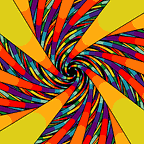Wi-Fi signals: reflection, absorption, diffraction, scattering, and interference
In a fantasy fast connection world, a wireless signal would travel in a straight line from its transmitter to the receiver. This propagation signal would travel in LOS (Line of sight), using the least amount of energy and resulting in the reception of the clearest possible signal.
But in reality, there are many factors trying to stop this perfect signal from happening.
Example :
The theoretical maximum throughput of IEEE 802.11g is 54 Mbps (Megabits). But the effective throughput is generally a third of that. This loss is called wireless signal attenuation.
Factors stopping or beloved smooth speed:
- Absorption —Some materials like walls and water would absorb the potential energy of those signals, reducing their strength. Metallic appliances like fridges also. So don’t place your router near a fish tank or a fridge.
- Reflection — when an EM wave encounters a surface or obstacle and bounces back to its source. This causes loss of signal. But reflection is not that bad, actually, it helps the signal to reach your device. Suppose there is a wall between the router and your PC, if the reflection was absent, the signal wouldn’t reach your PC. So, reflection ultimately helps the signal reach its destination.
- Diffraction — Corners and sharp surfaces cause an EM wave just like the one thrown from a router to split into secondary smaller waves.
- Scattering — Diffusion of signal, when they encounter an uneven surface. Dust, smoke, or water particles in the air can cause the signal to scatter off. When the signal encounters a surface it dissipates into multiple reflected signals causing substantial signal loss.
- Interference — Many household appliances cause interference with your WIFI signals like microwave ovens cellular phones. Any device that emits or uses the same frequency as the signal in question (2.4 GHz/5GHz for WIFI), can interfere with your WIFI signal.
Other factors can be antenna placement, the distance between 2 points of communication, etc.
